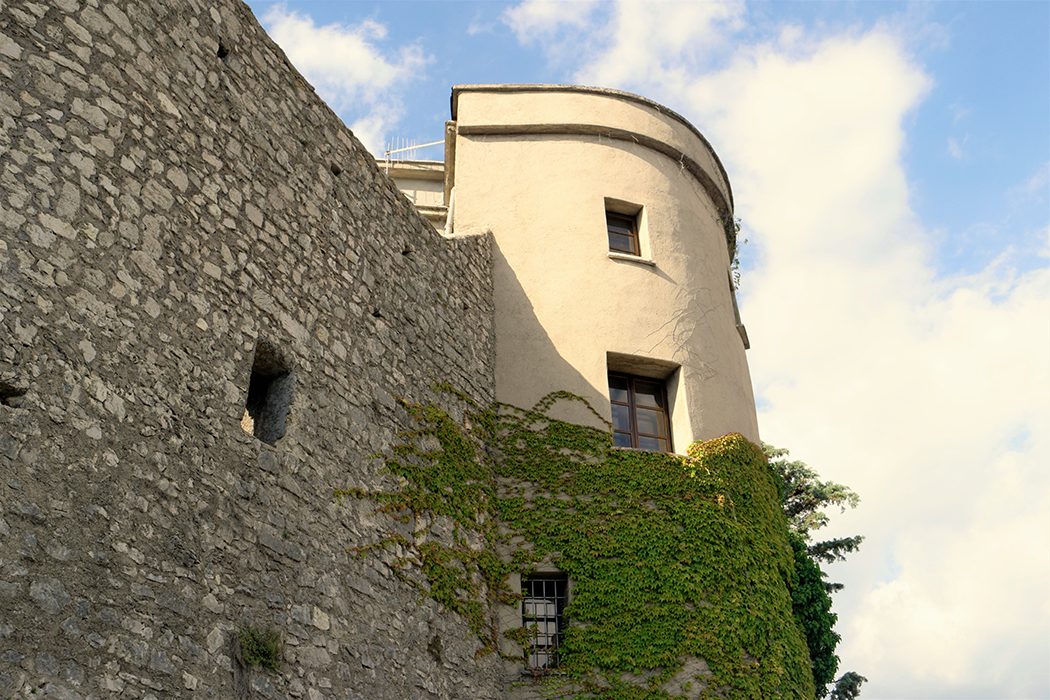Like most of the highlands villages, particularly in southern Lazio, Trivigliano is formed around a tower, in this case, around three towers that then give the name to the town.
The castle of Trivigliano was the nucleus of the village: today there are only the traces of a tower and a small building featuring an elegant marble mullioned window. These buildings are housed inside a residential complex which, since 1646, has belonged to the same family and is articulated on various levels with different facets of the town.
Before that time, it was the residence of the Governor who managed the town on behalf of the Colonna family, and the history of Trivigliano had been written in its walls.
The castle is accessed through three entrances, two of which is located directly in the historic centre, right in the medieval heart of what was the courtyard of the castle and to which you will come via alleyways and characteristic underpasses. Walking through these little streets you just have the impression of crossing through history and returning to the Middle Ages.
The second entry from the centre of the village is a stately doorway to a 19th century palace.
This building is part of the nineteenth century palace of Bishop Gaspare Maria Petochi, Vicar of the Pope, who spent his summers and family breaks here.
Already in the eighteenth century, the family had joined several pre-existing medieval buildings and this work was then continued by the bishop. The prelate had arranged the façade and enlarged the building with a view over the elegant garden to which it could be accessed by carriages and vehicles. Inside the building you can see the family coat of arms in his bedroom and there is also a small chapel with 18th-century furnishings.
Monsignor Petochi died in 1855 and is buried in the church of Santa Maria Assunta, where a plate remembers him.
The main (third) entrance to the castle is now represented by a long tree-lined avenue that starts from the square where at the other end there is the Camposanto of the village, surrounded by olive trees and hazelnuts, a tennis court and a bowling (bocce) green. A second gate introduces us to the top of the garden designed in English style and arrives at a small courtyard where the different buildings stand.
This modification was made at the beginning of the last century by Giuseppe Petochi who shared his life between Rome and Fiuggi.
At the centre of the courtyard there is a walnut tree that was planted at the birth of his son Domenico, whose life tells a strange story: the tree seemed to give up and die just at the same time as Domenico's death, but with loving family care, has regenerated its vital sap and today still dominates the area.
In 1884 Giuseppe had gone to Rome with his brother and had opened one of the first jewelers in the centre of the capital. Thanks to his art and his skill, he had become the trusted jeweller of the royal family and many noble families who spent their summer holidays in Fiuggi. Fiuggi and Trivigliano are very close and the castle in the 1950s was a world of life for those who did not want to be too alone and find themselves in good company.
Trivigliano Castle had become a cultural and artistic point of reference for a friendly and welcoming environment.
Today, the castle and the garden are beautifully-kept by the family and host some events in the town's life, such as the Christmas Presepe, concerts and book launches in the summer.








Follow us